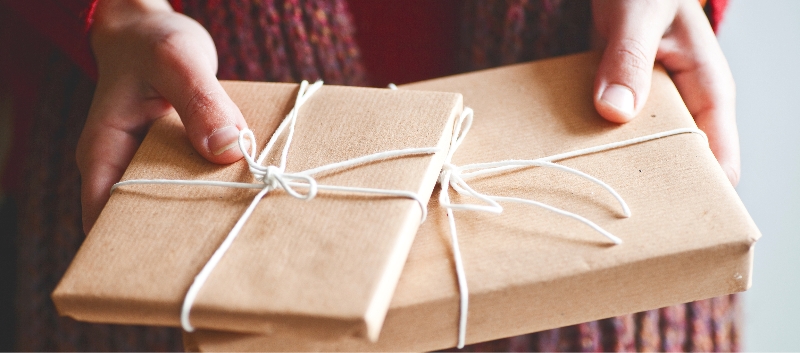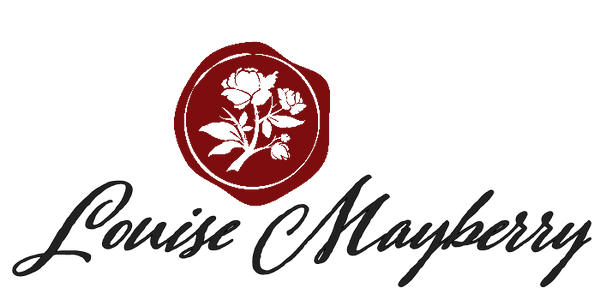
Where is your money going this holiday season?
Share
(this post was originally published as an email to subscribers on Black Friday, 11/24/2023.)
You're probably getting a lot of emails today urging you to buy things.
This is not one of those emails.
To be honest (and I know this isn't a particularly popular thing to say today), I'm not a fan of Black Friday. Not that I don't love the holidays - the music, the lights, the cozy vibes, the heartfelt gifts, the good food and the extra time with family. But a "holiday" manufactured by the world's largest corporations in order to convince us we must buy all the things and now? Not so much. I'd rather curl up with a good book in a slanting ray of November sunshine. Or decorate a tree with my family. Or take a walk.
What a strange time of year this is. One the one hand, we're bombarded with holiday movies and other media that emphasize that love and family are more important than any materials possession. Then the commercials come on, and we're urged to buy. buy. buy, with the distinct sub-text that whatever is being sold is absolutely necessary if we are to truly experience the season, or not disappoint those we love...
Is it any wonder that mental health can be such a challenge this time of year?
So, instead of asking you to buy anything today, I'm going to ask you to take a few minutes to think about your purchases in a different light. Instead of thinking about the deal you're getting, take a breath, and think about the people who made or wrote or grew whatever it is you're buying, and what you can do to ensure they're getting a fair deal.
This simple act - beginning to align your gift giving with that "true" non-commercial meaning of the season, and using those holiday purchases to not only show the recipients of the gifts that you love them, but to extend that love and goodwill to those who made the gifts - will deepen your experience and make those purchases satisfying on an entirely new level.
Look for fair trade labels. Buy directly from makers, farmers and small businesses. Purchase goods from a company's website rather than Amazon. Craft your own handmade gifts.
But what about books? How do you know if an author is getting a fair deal for that book you're buying?
Great question! Here's what an indie author can expect to make from each of the most popular ebook and paperback platforms:

**Scroll to the very bottom of this email to learn more about how I calculated these numbers.
Here's what it looks like for paperbacks:

As you can see, buying directly from an author is by far the best deal for authors - like 83% better for paperbacks when compared to the least lucrative retailer. That's huge.
Do your favorite authors sell books directly from their own website? If they do, have you ever considered purchasing that way? It may not be as route as that Amazon buy button, but why not give it a try?
(Not that I'm telling you to buy anything today. Really, take a walk instead. You can buy your gifts, including books, tomorrow.)
~
Want more content like this? Sign up for my weekly newsletter.
*Notes on the graphs above, for those who crave detail:
Kobo Plus: Kobo Plus royalties are calculated using minutes read. I used royalty amounts from September (the most recent available), with an average reading speed of 300 words per minute for an 80,000 word novel. While this may be the smallest amount now, Kobo Plus is not an exclusive program like Kindle Unlimited, and it's growing, meaning that generally, each month what an author gets per minute read is increasing. (While on the whole, KU royalties have been decreasing.)
Kindle Unlimited: KU royalties are calculated using pages read, and I used an average 80,000 word novel for this calculation. My books aren't in KU, so I used the most recent publicly available data I could find (October 2023) for payment per page read. It's also worth noting that because KU requires exclusivity, for a KU author, this graph would be limited to only the KU and Amazon options.
Amazon, B&N, Kobo, Google and Apple Ebooks: Each of these retailers takes 30% of the royalties (70% goes to the author). Amazon also has a small "delivery fee" that's based on the size of the ebook file. If the book is $0.99 or less on Amazon, Amazon's share of the royalties increases to 65% (35% for the author)
Author Website Ebooks: Royalties are based on Shopify's Shop Pay transaction fees, which differ slightly from other payment platforms like Paypal.
Barnes & Noble Paperback: Based on distribution through Draft2Digital Print, for my book Roses in Red Wax. Costs and royalties vary a bit with the size of the novel. Other distribution channels like Ingram Spark offer comparable rates.
Amazon Paperback: Authors are paid 60% of the retail price minus the cost of the book. The number shown here is what I get for my novel, Roses in Red Wax. Royalties vary based on the length of the book.
Author Website Paperback: Based on Shop Pay fees, and the wholesale cost from BookVault (the leading print on demand provider), for my book, Roses in Red Wax. Book costs are variable based on the size of the book.
